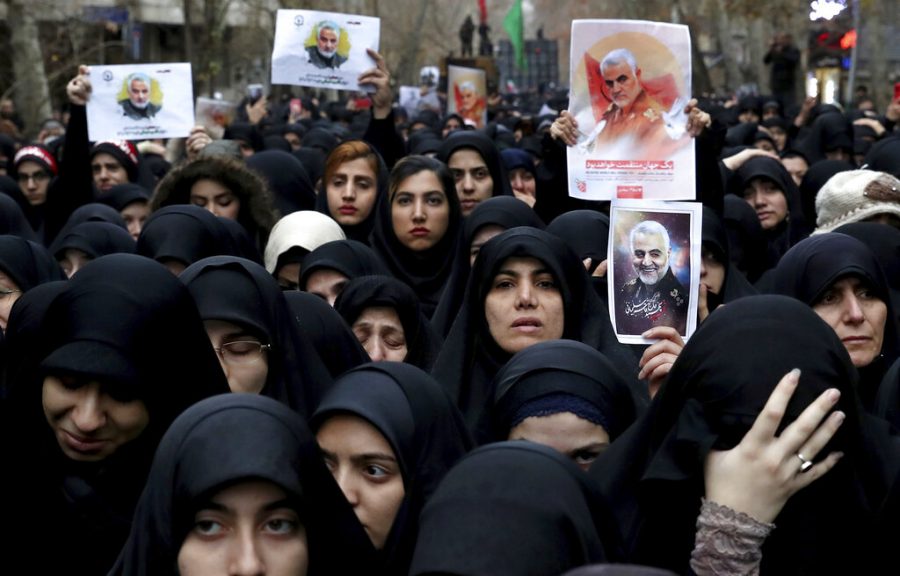Iran, but less confusing
World War III or World War Meme?
Protesters demonstrate over the U.S. airstrike in Iraq that killed Iranian Revolutionary Guard Gen. Qassem Soleimani in Tehran, Iran, Saturday Jan. 4, 2020. Iran has vowed “harsh retaliation” for the U.S. airstrike near Baghdad’s airport that killed Tehran’s top general and the architect of its interventions across the Middle East, as tensions soared in the wake of the targeted killing. (AP Photo/Ebrahim Noroozi)
In light of the recent events in Iran, here’s some background on what happened this week and what comes next.
First things first: what actually happened, and will there be a World War III?
On January 3rd, the U.S. killed Iranian General Qassem Soleimani with a drone strike at a secret meeting in Iraq. Tensions had been especially high between the two countries beforehand; pro-Iranian protesters recently surrounded the U.S. embassy in Baghdad, Iraq. As for the World War III question, the answer is no — well, not necessarily. The reality is that each side has far too much to lose to risk starting a war. In summary, never trust a meme to teach you about international relations. Just don’t.
Who is that? And why was he assassinated?
Qassem Soleimani was an Iranian general with ties to political/terrorist groups Hezbollah and Hamas. He was in charge of Iran’s Quds Force, which is similar to the CIA and Navy SEALs (credit where credit is due: thanks, Mr. Henry, for the analogy). Essentially, his job was to plan special forces operations abroad to advance and protect the interests of Iran. His Quds force is thought to be responsible for the deaths of many Americans in the Middle East, including a contractor from the United States whose killing influenced President Trump’s decision to order the strike in the first place.
Why is this such a big deal?
In order to take this kind of military action without congressional approval, a president must prove that the action was justified by an “imminent threat.” Was Soleimani threatening to the United States? Sure. But despite this, there has been much debate over whether or not his actions were an immediate risk to American lives — that is, if he was about to commit/order an attack, or if his presence and position simply made the U.S. uncomfortable. Also, Soleimani wasn’t an independent military leader; he was one of Iran’s highest-ranking government officials. Under international law, this would be the same as Iran assassinating an American member of Congress during a visit to troops in Iraq or Afghanistan.
Is the draft coming back?
Probably not. In addition to being unnecessary, it would also be wildly unpopular. . . especially in an election year.
How did Iran respond?
On January 7th, Iran launched over a dozen missiles at American military bases in Iraq. The missiles hit only strategic targets, and no U.S. troops were harmed. This may have been by design; both Iran and the United States have expressed the desire to avoid war, and many experts have suggested that Iran’s non-lethal attack was a sort of “exit ramp” that would allow both countries to save face and avoid war. So far, the theory has proven correct, as Trump announced in a statement on Wednesday that the U.S. was “ready to embrace peace” (though he plans to continue enforcing economic sanctions).
Earlier this week, Trump had deployed an additional 3,500 troops to the Middle East. Iraqi Parliament voted to kick U.S. forces out of Iraq, but the vote may not be legally binding, which means that there is not a clear path to enforcement. There are currently no plans to withdraw U.S. troops from Iraq.
Another (unfortunate) detail:
56 Iranians were reportedly killed in a stampede during Soleimani’s funeral procession.


